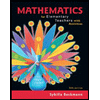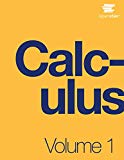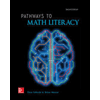
Mathematical Methods in the Physical Sciences
3rd Edition
ISBN: 9780471198260
Author: Mary L. Boas
Publisher: Wiley, John & Sons, Incorporated
expand_more
expand_more
format_list_bulleted
Textbook Question
Chapter 5.5, Problem 16P
For these problems, the most important sketch is the projection in the plane of
Find the centroid of the surface area in Problem 2.
Expert Solution & Answer
Want to see the full answer?
Check out a sample textbook solution
Students have asked these similar questions
Need help with a Surface Integral Problem!
The area bounded by the curve is 9y = x⁴ the line is y-9, and the y-axis is revolved about the y-axis. How far from the x-axis is the centroid of the resulting solid? *
Find the area and centroidal distances of the curve that lies between the equations y=4-x^2 and y=x+2
Chapter 5 Solutions
Mathematical Methods in the Physical Sciences
Ch. 5.1 - 2sincocd=sin2or-cos2or-12cos2. Hint: Use trig...Ch. 5.1 - dxx2+a2=sinh1xaorInx+x2+a2. Hint:To find the sinh1...Ch. 5.1 - dyy2a2=cosh1yaorIny+y2a2. Hint: See Problem 2...Ch. 5.1 - ...Ch. 5.1 - Kdr1k2r2=sinh1Kror-cos1Krortan1Kr1k2r2 Hints:...Ch. 5.1 - Kdrrr2k2cos1krorsec1rkor-sin1kror-tan1Kr2k2Ch. 5.2 - In the problems of this section, set up and...Ch. 5.2 - In the problems of this section, set up and...Ch. 5.2 - In the problems of this section, set up and...Ch. 5.2 - In the problems of this section, set up and...
Ch. 5.2 - In the problems of this section, set up and...Ch. 5.2 - In the problems of this section, set up and...Ch. 5.2 - In Problems 7 to 18 evaluate the double integrals...Ch. 5.2 - In Problems 7 to 18 evaluate the double integrals...Ch. 5.2 - In Problems 7 to 18 evaluate the double integrals...Ch. 5.2 - In Problems 7 to 18 evaluate the double integrals...Ch. 5.2 - In Problems 7 to 18 evaluate the double integrals...Ch. 5.2 - In Problems 7 to 18 evaluate the double integrals...Ch. 5.2 - In Problems 7 to 18 evaluate the double integrals...Ch. 5.2 - In Problems 7 to 18 evaluate the double integrals...Ch. 5.2 - In Problems 7 to 18 evaluate the double integrals...Ch. 5.2 - In Problems 7 to 18 evaluate the double integrals...Ch. 5.2 - In Problems 7 to 18 evaluate the double integrals...Ch. 5.2 - In Problems 7 to 18 evaluate the double integrals...Ch. 5.2 - In Problems 19 to 24, use double integrals to find...Ch. 5.2 - In Problems 19 to 24, use double integrals to find...Ch. 5.2 - In Problems 19 to 24, use double integrals to find...Ch. 5.2 - In Problems 19 to 24, use double integrals to find...Ch. 5.2 - In Problems 19 to 24, use double integrals to find...Ch. 5.2 - In Problems 19 to 24, use double integrals to find...Ch. 5.2 - In Problems 25 to 28, sketch the area of...Ch. 5.2 - In Problems 25 to 28, sketch the area of...Ch. 5.2 - In Problems 25 to 28, sketch the area of...Ch. 5.2 - In Problems 25 to 28, sketch the area of...Ch. 5.2 - In Problems 29 to 32, observe that the inside...Ch. 5.2 - In Problems 29 to 32, observe that the inside...Ch. 5.2 - In Problems 29 to 32, observe that the inside...Ch. 5.2 - In Problems 29 to 32, observe that the inside...Ch. 5.2 - A lamina covering the quarter disk x2+y24,x0,y0,...Ch. 5.2 - A dielectric lamina with charge density...Ch. 5.2 - A triangular lamina is bounded by the coordinate...Ch. 5.2 - A partially silvered mirror covers the square area...Ch. 5.2 - In Problems 37 to 40, evaluate the triple...Ch. 5.2 - In Problems 37 to 40, evaluate the triple...Ch. 5.2 - In Problems 37 to 40, evaluate the triple...Ch. 5.2 - In Problems 37 to 40, evaluate the triple...Ch. 5.2 - Find the volume between the planes...Ch. 5.2 - Find the volume between the planes...Ch. 5.2 - Find the volume between the surfaces...Ch. 5.2 - Find the mass of the solid in Problem 42 if the...Ch. 5.2 - Find the mass of the solid in Problem 43 if the...Ch. 5.2 - Find the mass of a cube of side 2 if the density...Ch. 5.2 - Find the volume in the first octant bounded by the...Ch. 5.2 - Find the volume in the first octant bounded by the...Ch. 5.2 - Find the volume in the first octant bounded by the...Ch. 5.2 - Find the mass of the solid in Problem 48 if the...Ch. 5.3 - The following notation is used in the problems:...Ch. 5.3 - The following notation is used in the problems:...Ch. 5.3 - The following notation is used in the problems:...Ch. 5.3 - Prob. 4PCh. 5.3 - The following notation is used in the problems:...Ch. 5.3 - The following notation is used in the problems:...Ch. 5.3 - The following notation is used in the problems:...Ch. 5.3 - The following notation is used in the problems:...Ch. 5.3 - The following notation is used in the problems:...Ch. 5.3 - The following notation is used in the problems:...Ch. 5.3 - The following notation is used in the problems:...Ch. 5.3 - Prove the following two theorems of Pappus: The...Ch. 5.3 - Prove the following two theorems of Pappus: An arc...Ch. 5.3 - Prove the following two theorems of Pappus: Use...Ch. 5.3 - Prove the following two theorems of Pappus: Use...Ch. 5.3 - Prove the following two theorems of Pappus: Let a...Ch. 5.3 - In Problems 17 to 30, for the curve y=x, between...Ch. 5.3 - In Problems 17 to 30, for the curve y=x, between...Ch. 5.3 - In Problems 17 to 30, for the curve y=x, between...Ch. 5.3 - In Problems 17 to 30, for the curve y=x, between...Ch. 5.3 - In Problems 17 to 30, for the curve y=x, between...Ch. 5.3 - In Problems 17 to 30, for the curve y=x, between...Ch. 5.3 - In Problems 17 to 30, for the curve y=x, between...Ch. 5.3 - In Problems 17 to 30, for the curve y=x, between...Ch. 5.3 - In Problems 17 to 30, for the curve y=x, between...Ch. 5.3 - In Problems 17 to 30, for the curve y=x, between...Ch. 5.3 - In Problems 17 to 30, for the curve y=x, between...Ch. 5.3 - In Problems 17 to 30, for the curve y=x, between...Ch. 5.3 - In Problems 17 to 30, for the curve y=x, between...Ch. 5.3 - In Problems 17 to 30, for the curve y=x, between...Ch. 5.3 - Revolve the curve y=x1, from x=1 to x=, about the...Ch. 5.3 - Use a computer or tables to evaluate the integral...Ch. 5.3 - Verify that (3.10) gives the same result as (3.8).Ch. 5.4 - As needed, use a computer to plot graphs of...Ch. 5.4 - As needed, use a computer to plot graphs of...Ch. 5.4 - As needed, use a computer to plot graphs of...Ch. 5.4 - As needed, use a computer to plot graphs of...Ch. 5.4 - As needed, use a computer to plot graphs of...Ch. 5.4 - As needed, use a computer to plot graphs of...Ch. 5.4 - As needed, use a computer to plot graphs of...Ch. 5.4 - As needed, use a computer to plot graphs of...Ch. 5.4 - As needed, use a computer to plot graphs of...Ch. 5.4 - As needed, use a computer to plot graphs of...Ch. 5.4 - As needed, use a computer to plot graphs of...Ch. 5.4 - As needed, use a computer to plot graphs of...Ch. 5.4 - As needed, use a computer to plot graphs of...Ch. 5.4 - As needed, use a computer to plot graphs of...Ch. 5.4 - As needed, use a computer to plot graphs of...Ch. 5.4 - Find the Jacobians x,y/u,v of the given...Ch. 5.4 - Find the Jacobians x,y/u,v of the given...Ch. 5.4 - Find the Jacobians x,y/u,v of the given...Ch. 5.4 - Find the Jacobians x,y/u,v of the given...Ch. 5.4 - Find the Jacobians x,y/u,v of the given...Ch. 5.4 - Find the Jacobians x,y/u,v of the given...Ch. 5.4 - Find the Jacobians x,y/u,v of the given...Ch. 5.4 - Prob. 23PCh. 5.4 - Find the Jacobians x,y/u,v of the given...Ch. 5.4 - Find the Jacobians x,y/u,v of the given...Ch. 5.4 - Find the Jacobians x,y/u,v of the given...Ch. 5.4 - Find the Jacobians x,y/u,v of the given...Ch. 5.4 - Prob. 28PCh. 5.5 - For these problems, the most important sketch is...Ch. 5.5 - For these problems, the most important sketch is...Ch. 5.5 - For these problems, the most important sketch is...Ch. 5.5 - For these problems, the most important sketch is...Ch. 5.5 - For these problems, the most important sketch is...Ch. 5.5 - For these problems, the most important sketch is...Ch. 5.5 - For these problems, the most important sketch is...Ch. 5.5 - For these problems, the most important sketch is...Ch. 5.5 - For these problems, the most important sketch is...Ch. 5.5 - For these problems, the most important sketch is...Ch. 5.5 - For these problems, the most important sketch is...Ch. 5.5 - For these problems, the most important sketch is...Ch. 5.5 - For these problems, the most important sketch is...Ch. 5.5 - For these problems, the most important sketch is...Ch. 5.5 - For these problems, the most important sketch is...Ch. 5.5 - For these problems, the most important sketch is...Ch. 5.6 - As needed, use a computer to plot graphs and to...Ch. 5.6 - As needed, use a computer to plot graphs and to...Ch. 5.6 - As needed, use a computer to plot graphs and to...Ch. 5.6 - As needed, use a computer to plot graphs and to...Ch. 5.6 - As needed, use a computer to plot graphs and to...Ch. 5.6 - As needed, use a computer to plot graphs and to...Ch. 5.6 - As needed, use a computer to plot graphs and to...Ch. 5.6 - As needed, use a computer to plot graphs and to...Ch. 5.6 - As needed, use a computer to plot graphs and to...Ch. 5.6 - As needed, use a computer to plot graphs and to...Ch. 5.6 - As needed, use a computer to plot graphs and to...Ch. 5.6 - As needed, use a computer to plot graphs and to...Ch. 5.6 - As needed, use a computer to plot graphs and to...Ch. 5.6 - As needed, use a computer to plot graphs and to...Ch. 5.6 - As needed, use a computer to plot graphs and to...Ch. 5.6 - As needed, use a computer to plot graphs and to...Ch. 5.6 - As needed, use a computer to plot graphs and to...Ch. 5.6 - As needed, use a computer to plot graphs and to...Ch. 5.6 - As needed, use a computer to plot graphs and to...Ch. 5.6 - As needed, use a computer to plot graphs and to...Ch. 5.6 - As needed, use a computer to plot graphs and to...Ch. 5.6 - As needed, use a computer to plot graphs and to...Ch. 5.6 - As needed, use a computer to plot graphs and to...Ch. 5.6 - As needed, use a computer to plot graphs and to...Ch. 5.6 - As needed, use a computer to plot graphs and to...Ch. 5.6 - As needed, use a computer to plot graphs and to...Ch. 5.6 - As needed, use a computer to plot graphs and to...
Additional Math Textbook Solutions
Find more solutions based on key concepts
In Exercises 7-14, determine the range and standard deviation of the set of data. When appropriate, round stand...
A Survey of Mathematics with Applications (10th Edition) - Standalone book
The table by using the given graph of h.
Calculus for Business, Economics, Life Sciences, and Social Sciences (14th Edition)
Percentiles. The pth percentile of a sorted data set is a number xp such that p of the data fall at or below xp...
Excursions in Modern Mathematics (9th Edition)
Solve each problem involving proportions. Price of Gasoline If 6 gallons of premium unleaded gasoline cost $17....
Mathematical Ideas (13th Edition) - Standalone book
Highest Degree Planned The next table shows the results from The American Freshman: National Norms Fall 2015 of...
Finite Mathematics & Its Applications (12th Edition)
Direction Fields. In each of problems 14 through 19 draw a direction field for the given differential equation....
Differential Equations: An Introduction to Modern Methods and Applications
Knowledge Booster
Learn more about
Need a deep-dive on the concept behind this application? Look no further. Learn more about this topic, subject and related others by exploring similar questions and additional content below.Similar questions
- Find the centroid of the region in the first quadrant bounded by the x-axis, the parabola y2 = 2x, and the line x + y = 4.arrow_forwardThe location of the centroid from the x-axis is equal toarrow_forwardfind the ordinate of the centroid of the region bounded by the parabola y = x^2 and the line y = 2x + 2 in the second quadrant.arrow_forward
arrow_back_ios
arrow_forward_ios
Recommended textbooks for you
 Discrete Mathematics and Its Applications ( 8th I...MathISBN:9781259676512Author:Kenneth H RosenPublisher:McGraw-Hill Education
Discrete Mathematics and Its Applications ( 8th I...MathISBN:9781259676512Author:Kenneth H RosenPublisher:McGraw-Hill Education Mathematics for Elementary Teachers with Activiti...MathISBN:9780134392790Author:Beckmann, SybillaPublisher:PEARSON
Mathematics for Elementary Teachers with Activiti...MathISBN:9780134392790Author:Beckmann, SybillaPublisher:PEARSON
 Thinking Mathematically (7th Edition)MathISBN:9780134683713Author:Robert F. BlitzerPublisher:PEARSON
Thinking Mathematically (7th Edition)MathISBN:9780134683713Author:Robert F. BlitzerPublisher:PEARSON Discrete Mathematics With ApplicationsMathISBN:9781337694193Author:EPP, Susanna S.Publisher:Cengage Learning,
Discrete Mathematics With ApplicationsMathISBN:9781337694193Author:EPP, Susanna S.Publisher:Cengage Learning, Pathways To Math Literacy (looseleaf)MathISBN:9781259985607Author:David Sobecki Professor, Brian A. MercerPublisher:McGraw-Hill Education
Pathways To Math Literacy (looseleaf)MathISBN:9781259985607Author:David Sobecki Professor, Brian A. MercerPublisher:McGraw-Hill Education

Discrete Mathematics and Its Applications ( 8th I...
Math
ISBN:9781259676512
Author:Kenneth H Rosen
Publisher:McGraw-Hill Education

Mathematics for Elementary Teachers with Activiti...
Math
ISBN:9780134392790
Author:Beckmann, Sybilla
Publisher:PEARSON


Thinking Mathematically (7th Edition)
Math
ISBN:9780134683713
Author:Robert F. Blitzer
Publisher:PEARSON

Discrete Mathematics With Applications
Math
ISBN:9781337694193
Author:EPP, Susanna S.
Publisher:Cengage Learning,

Pathways To Math Literacy (looseleaf)
Math
ISBN:9781259985607
Author:David Sobecki Professor, Brian A. Mercer
Publisher:McGraw-Hill Education
what is Research Design, Research Design Types, and Research Design Methods; Author: Educational Hub;https://www.youtube.com/watch?v=LpmGSioXxdo;License: Standard YouTube License, CC-BY